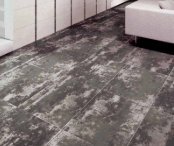Cer Magazine International n.20 - Tilmar Ceramics
Cer Magazine International n.20 - Tilmar Ceramics
Cer Magazine International n.20 - Tilmar Ceramics
You also want an ePaper? Increase the reach of your titles
YUMPU automatically turns print PDFs into web optimized ePapers that Google loves.
RIO BOTTA<br />
shell, thickness… the material qualities<br />
of the surface rather than transparency.<br />
How do light and matter coexist and<br />
interact in your work? What importance<br />
do they have in the definition of the<br />
project?<br />
MB. Light engenders space: without<br />
light there could be no architectural<br />
space. In my compositional studies, light<br />
plays a crucial role as a constituent<br />
element of architecture. A space created<br />
by side lighting is very different from one<br />
generated by overhead lighting.<br />
However, we must remember that light as<br />
an abstract entity requires materials in<br />
order to manifest itself. Materials thus<br />
assume a dual role: they lend visibility and<br />
substantiation to light, and thus to<br />
spaces, and underscore the aspect of<br />
gravity that is part<br />
and parcel of<br />
architecture. In its<br />
ultimate organisation,<br />
architecture<br />
entails the transmission<br />
of forces,<br />
tensions and structures<br />
that must be<br />
connected to the<br />
Enrico Cano<br />
ground. This idea of gravity has an<br />
enormous value as the physical<br />
expression of the relationship between<br />
new buildings and mother earth. Rather<br />
than resting on the earth, we can envision<br />
a building as emerging from its viscera.<br />
Instead of seeking to overcome the<br />
concept of gravity, architecture should<br />
harness it as an essential value for human<br />
living spaces.<br />
LS. Your works reveal a kind of<br />
declared “obsession” with the golden,<br />
perfect form and have strong symbolic<br />
connotations. Objects are always<br />
clearly defined, precise, meticulously<br />
designed and highly expressive. The<br />
very building we are in is a clear<br />
example of this. It is almost as if you<br />
derive from function not so much form<br />
MARIO BOTTA<br />
<strong>Cer</strong> <strong>Magazine</strong><br />
Initially inspired by Le Corbusier,<br />
Louis I. Kahn and Carlo Scarpa, he<br />
considers architecture and memory<br />
to be inseparable elements as<br />
the transformations wrought by<br />
architecture become part of the<br />
human landscape.<br />
The most distinctive features of his<br />
work are his use of light to engender<br />
space and his predilection for<br />
primary geometric shapes. From<br />
his first projects for single-family<br />
houses in the Ticino canton, he has<br />
progressed to many other kinds of<br />
buildings: schools, banks, administration<br />
buildings, libraries and<br />
museums, including MoMA in San<br />
Francisco and<br />
MART in Rovereto,<br />
as well as a<br />
number of places<br />
of worship in the<br />
last decade such<br />
as Evry Cathedral<br />
and a Synagogue<br />
in Tel Aviv.<br />
Beat Pfändler<br />
21



